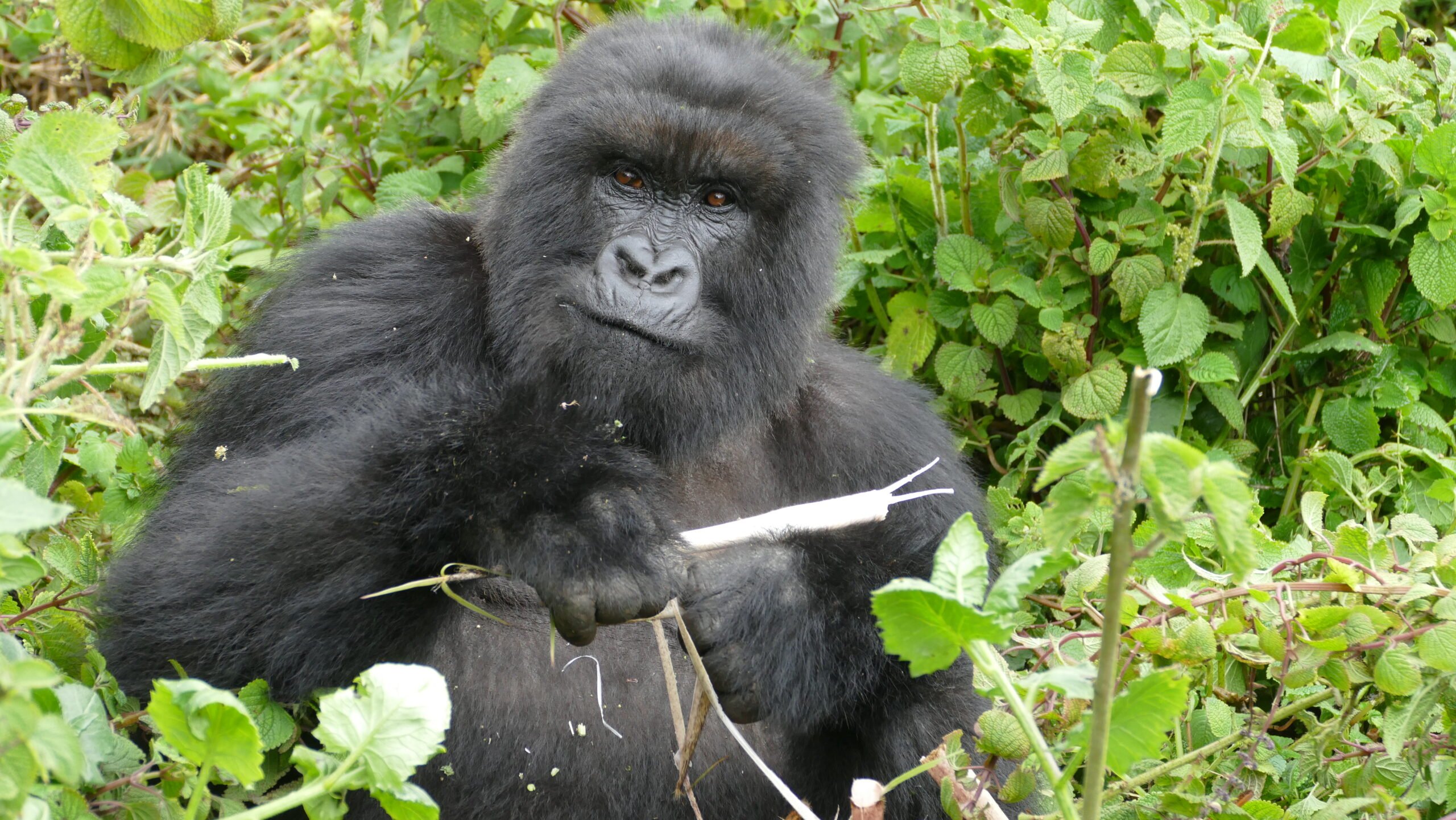Play is a common behavior among gorillas, just as it is with humans. Playing is seen most often among juveniles and younger infants as they make their first moves away from their mothers. Luckily, in most gorilla groups there are several youngsters to act as playmates for each other.
In the case of large gorilla groups – like the Pablo group that we monitor daily – youngsters frequently change their play partners and the playing sessions can last for quite some time. The youngsters at play can also become very adventurous, such as when they hang from branches and vines, run around trees, or roll down hills. Some of the other play behaviors we observe in youngsters include wrestling, spinning, and tickling each other with their mouths. This type of tickling can result in loud and long vocalizations that sound much like laughing.
Playing is healthy behavior for these youngsters and they learn many things while doing it. Play has great social value for them, as they learn how to interact with others and also form and reinforce bonds that may be useful later on. They also learn how to navigate their environment as they grow, and figure out how to handle their increasing strength.
Play is very important in the development of a young gorilla, even in cases where a youngster doesn’t have any playmates in the group. In that case, play can take place with the mother or with another adult, or the youngster can engage in self play, creatively using branches, vines or other objects in the environment.
Adults play too
Interestingly, we also observe adult gorillas playing from time to time. It’s especially nice when youngsters use the large backs of sleeping grownups – as a perfect place for climbing and sliding!
“Gorillas playing is always funny,” says Veronica Vecellio, Fossey Fund gorilla program senior advisor. “It’s impossible not to smile and even to laugh out loud when observing gorillas having fun!”






